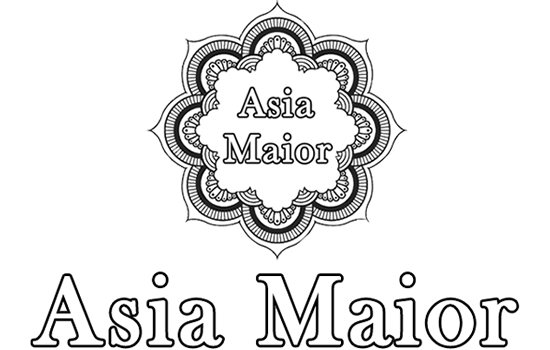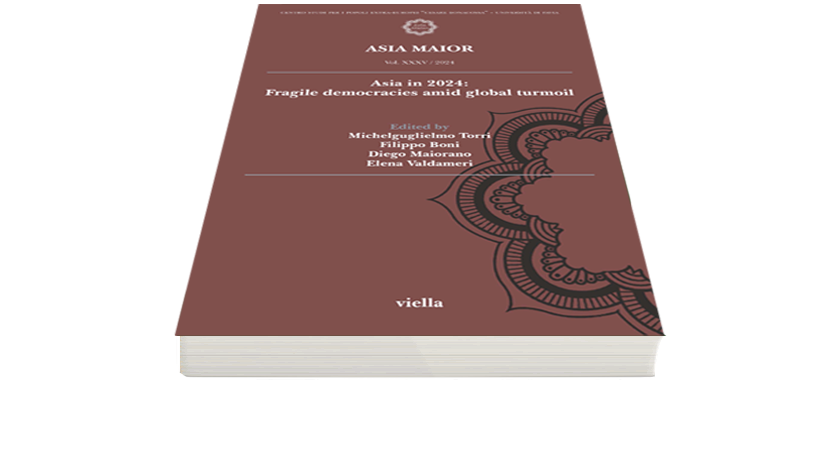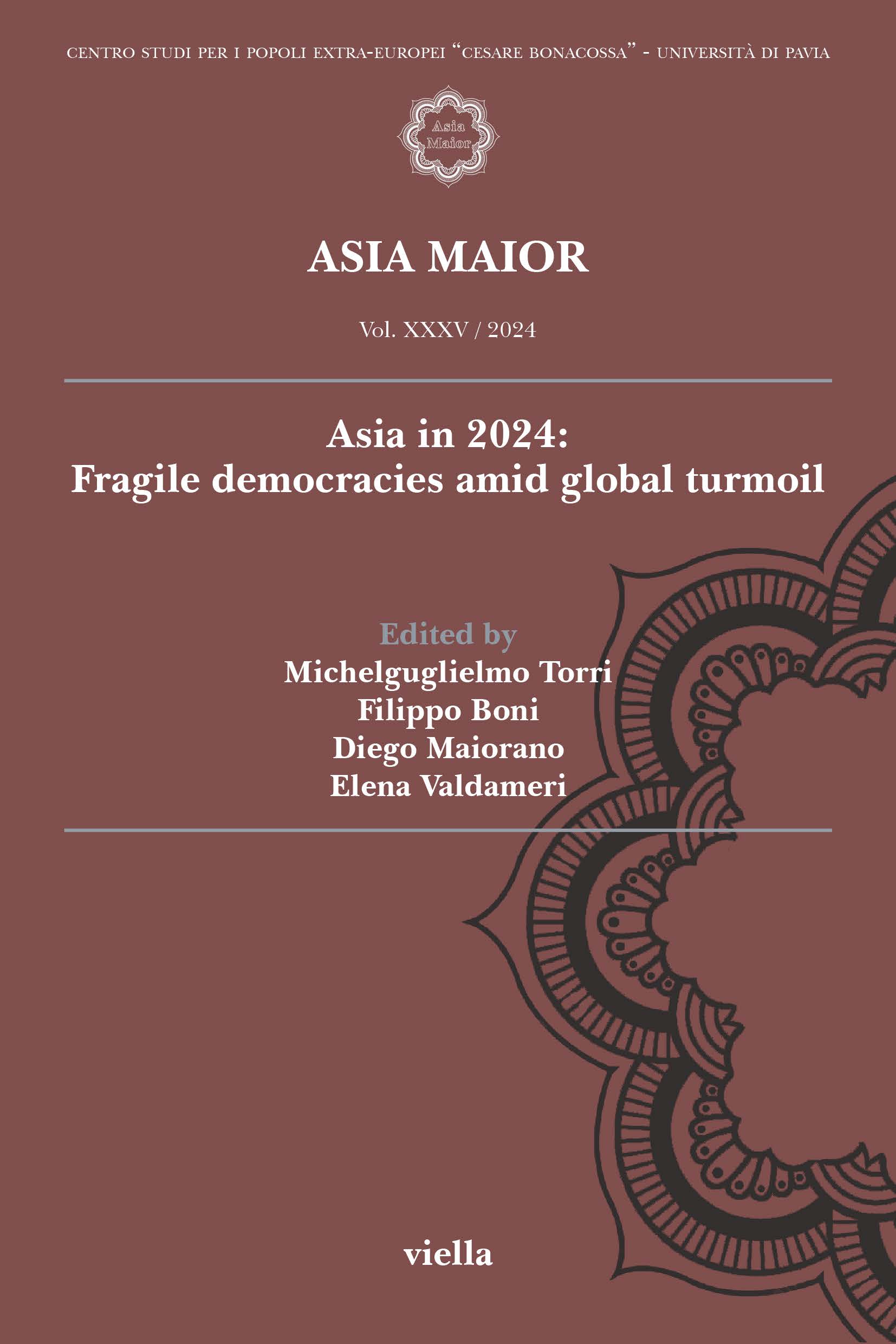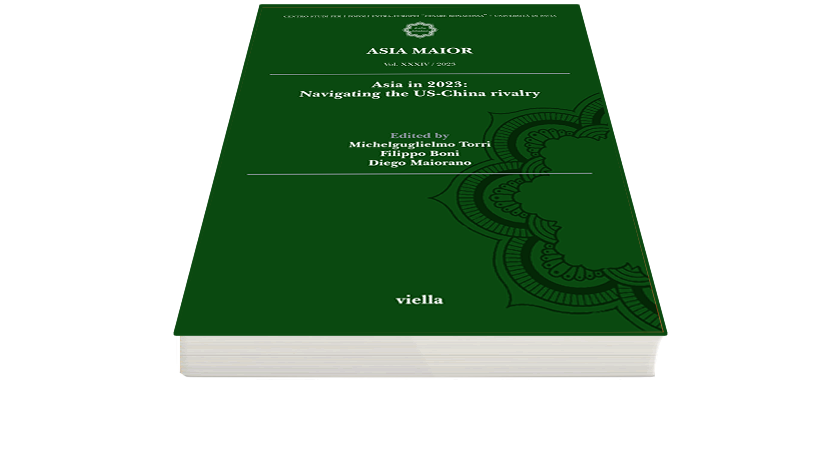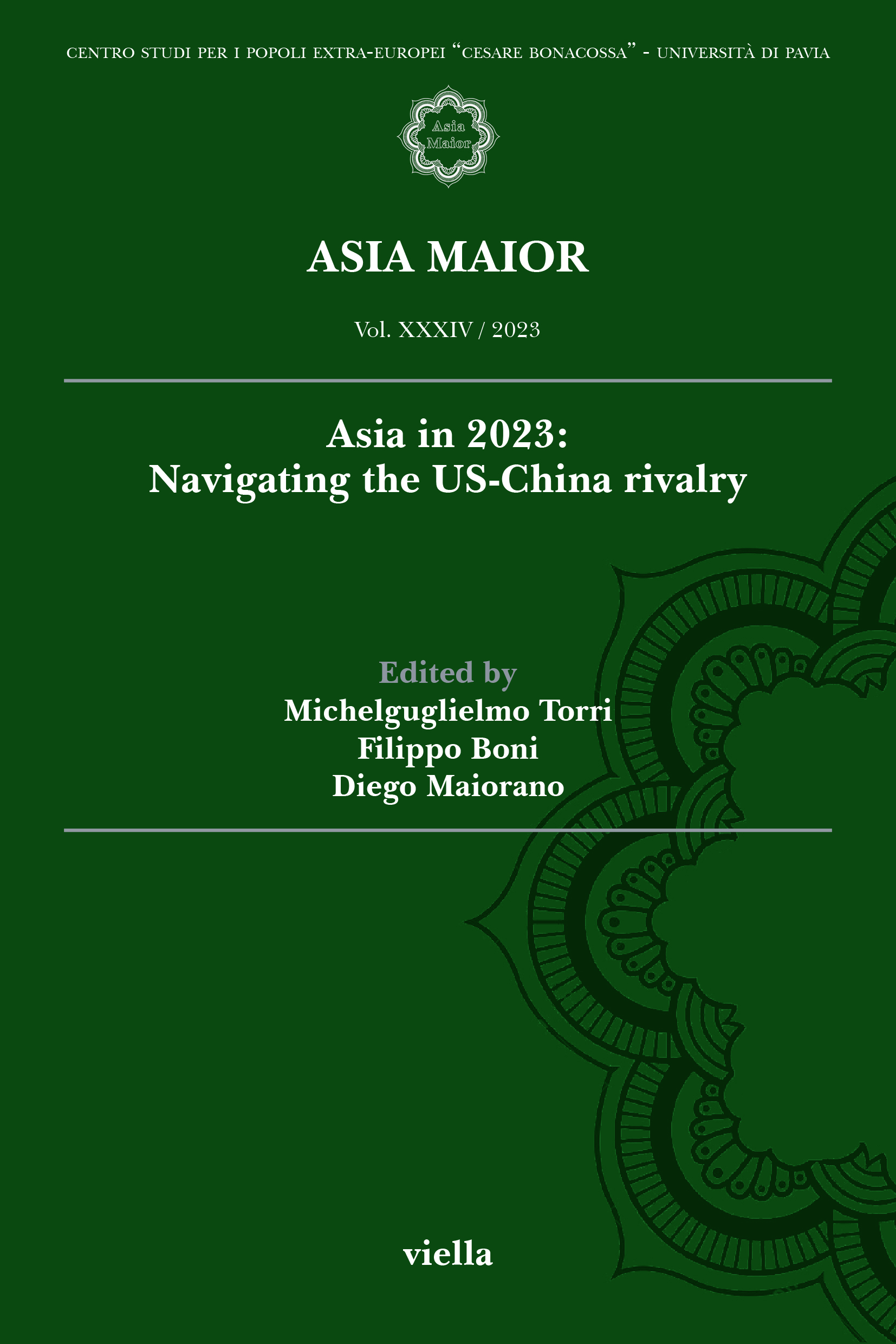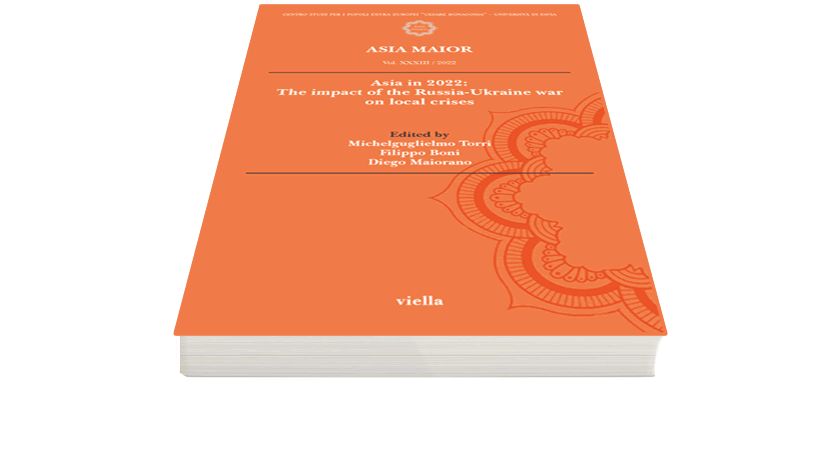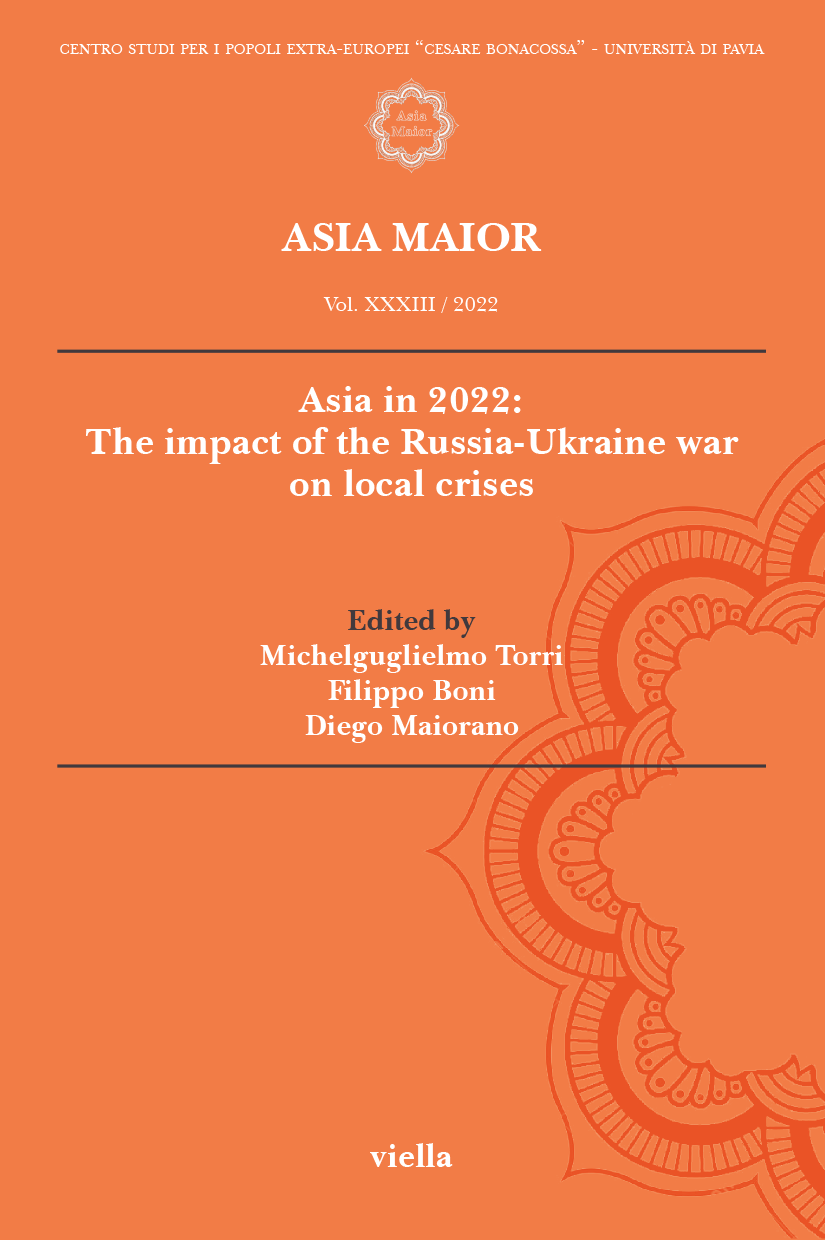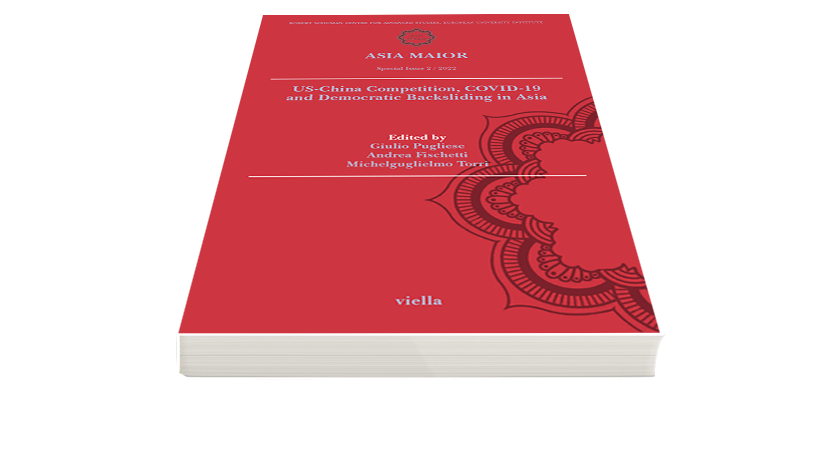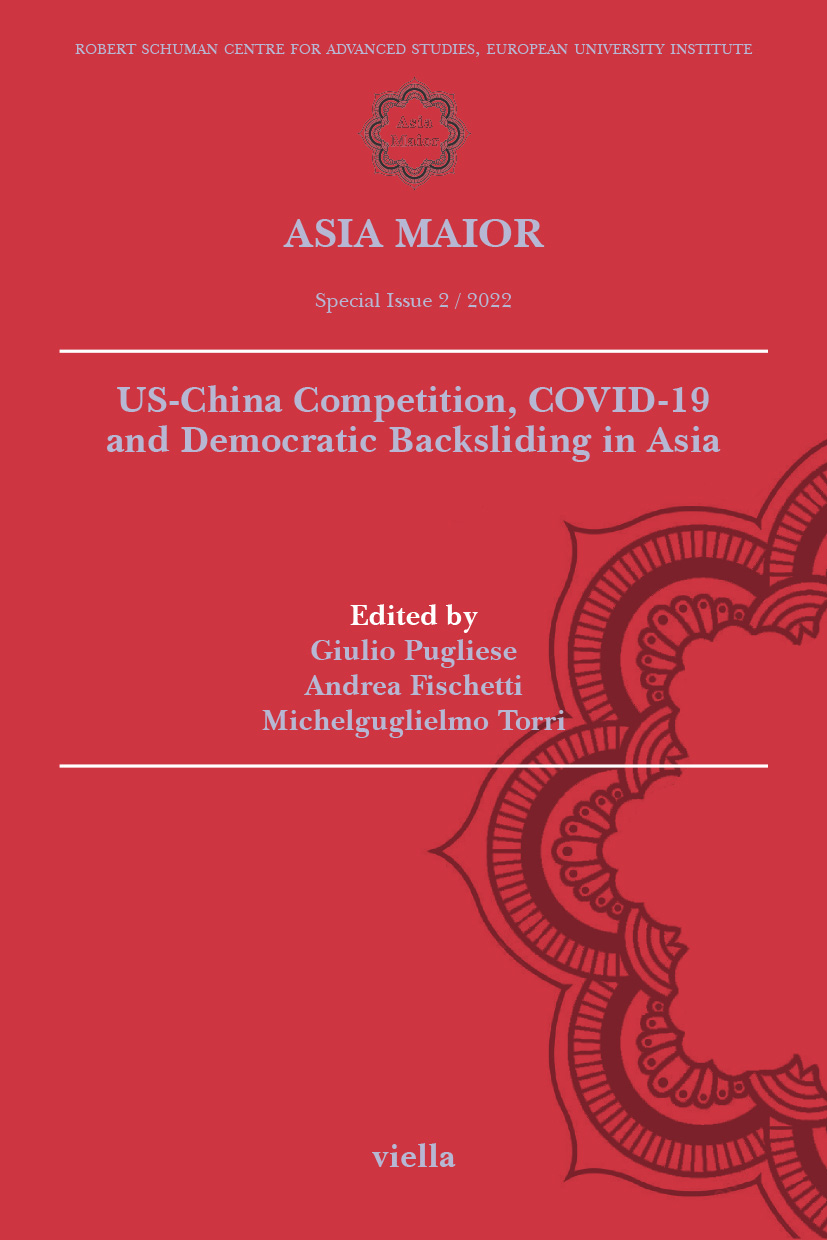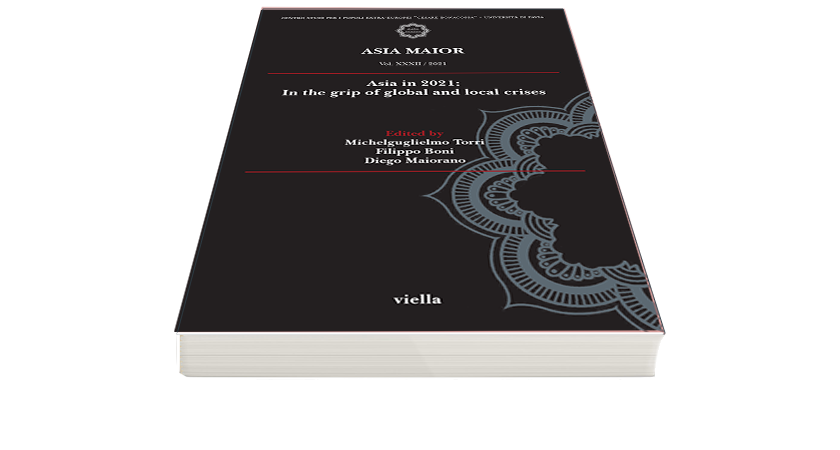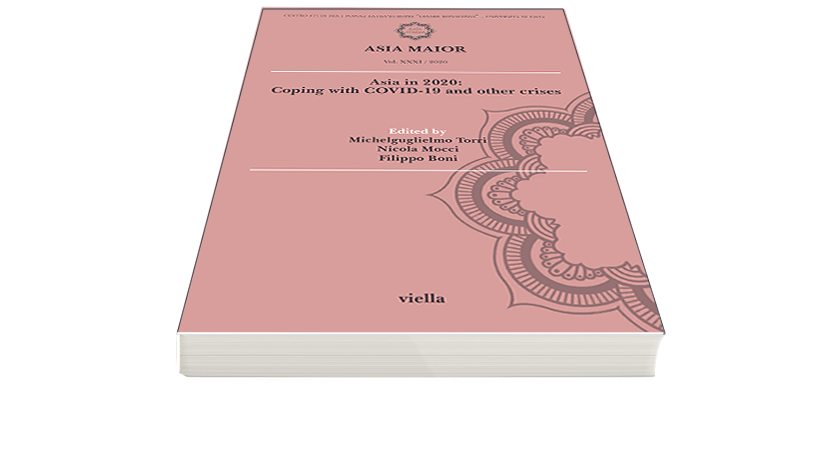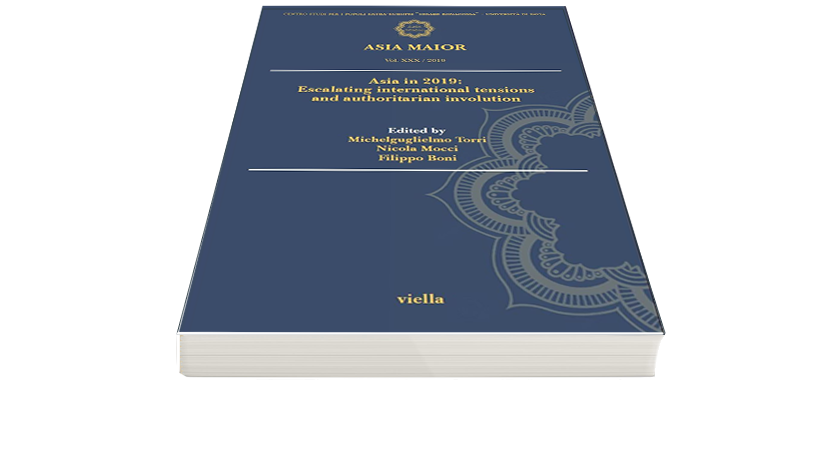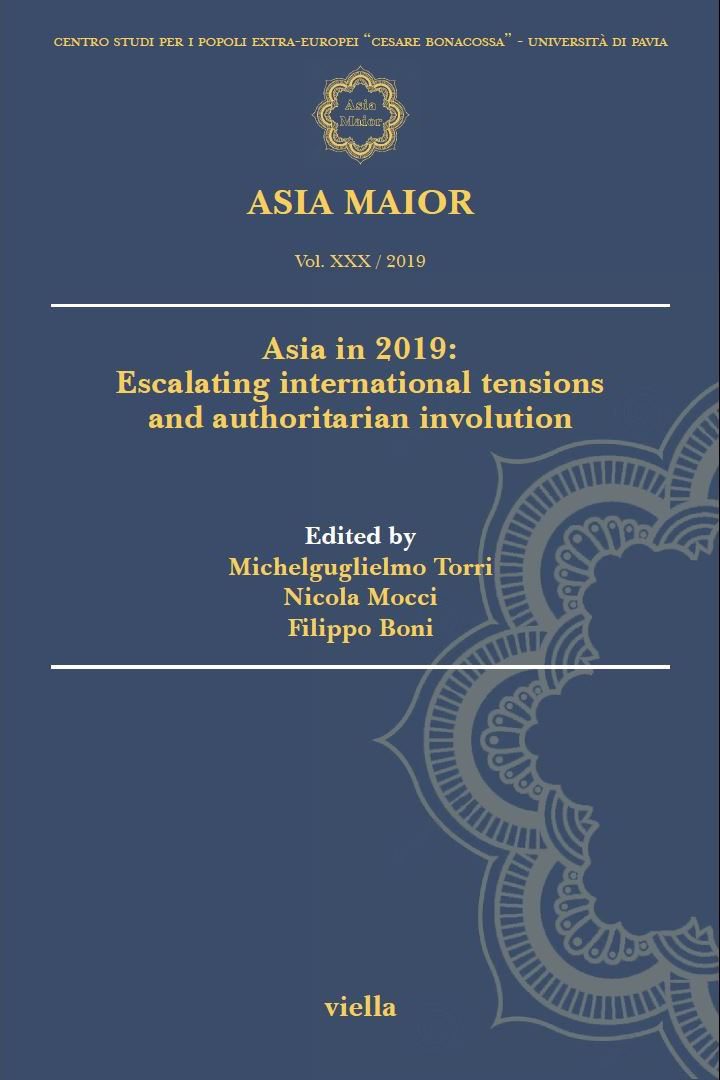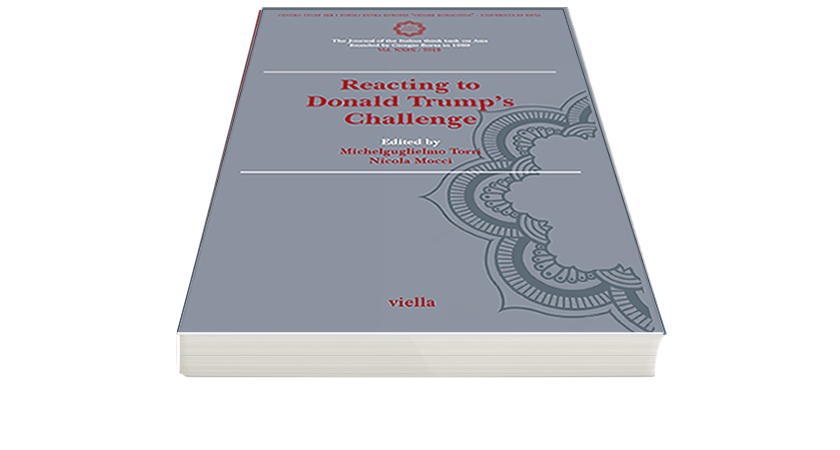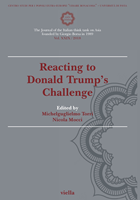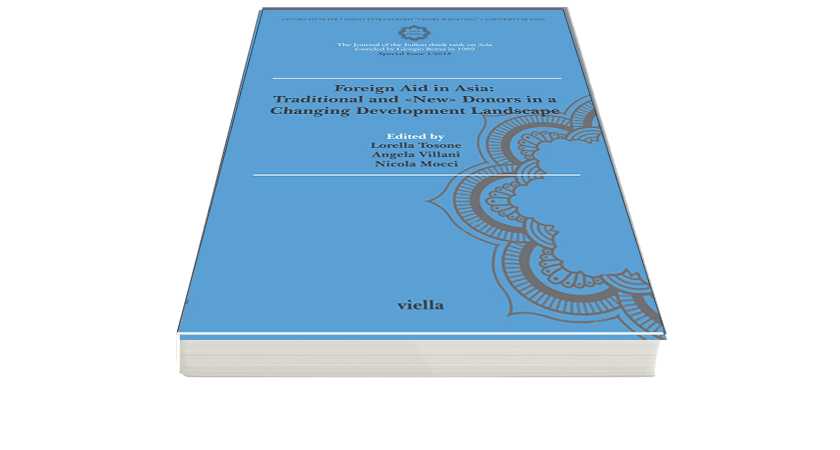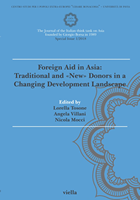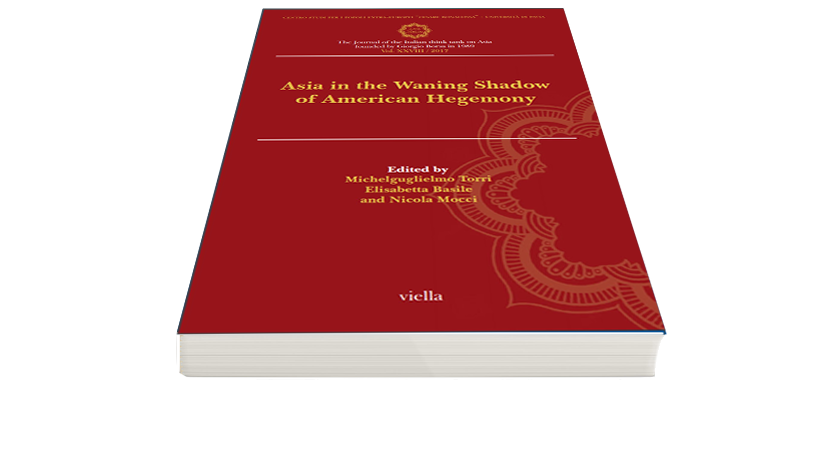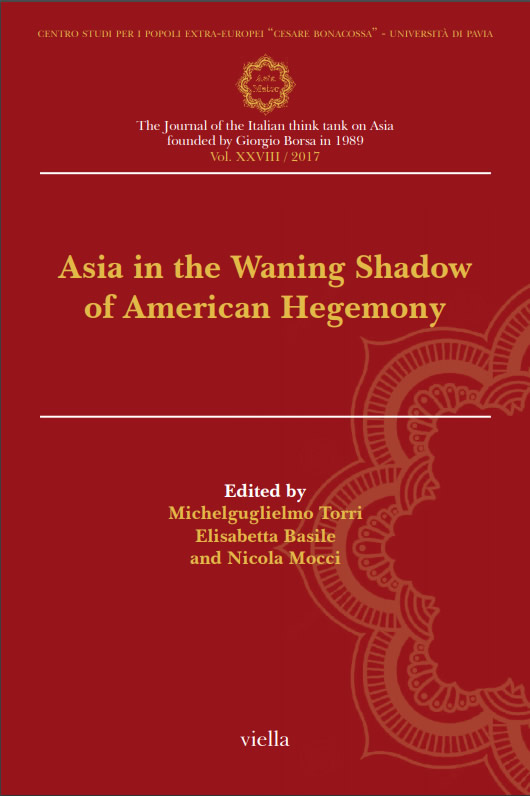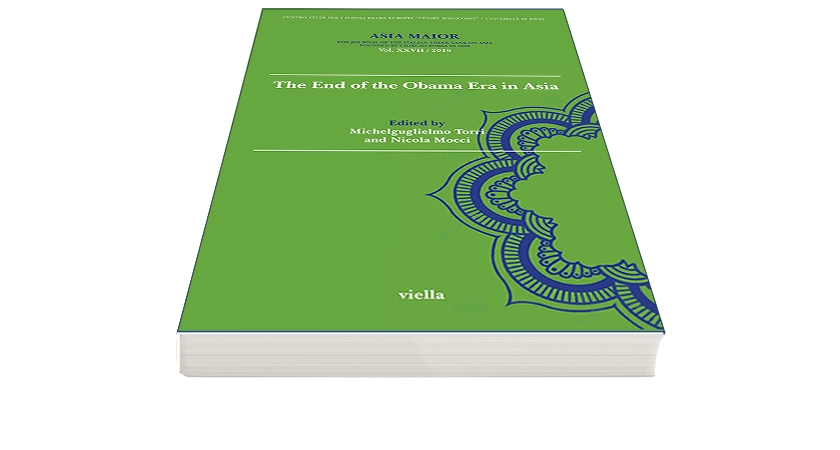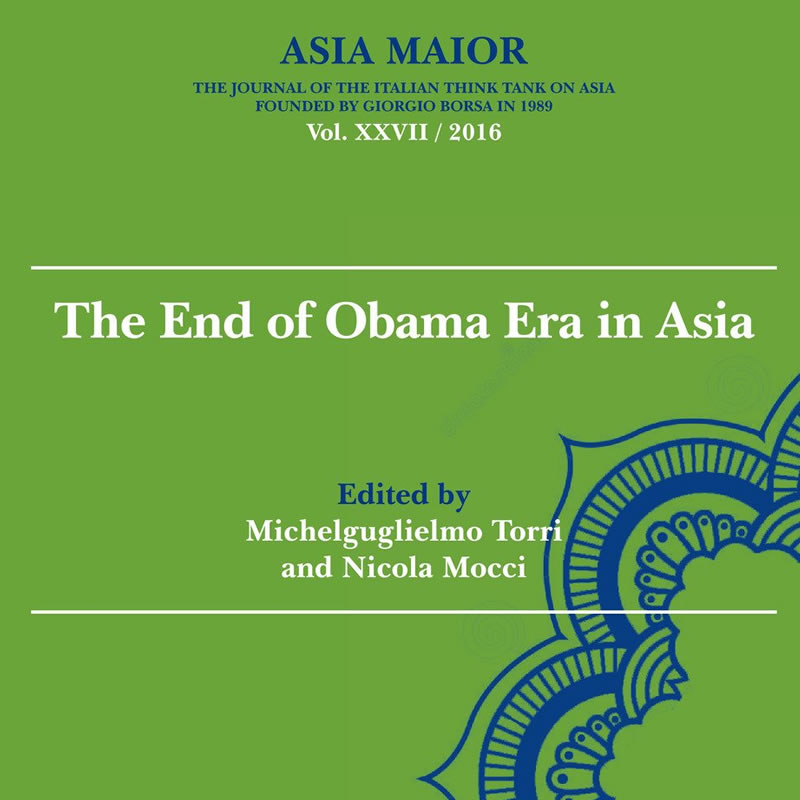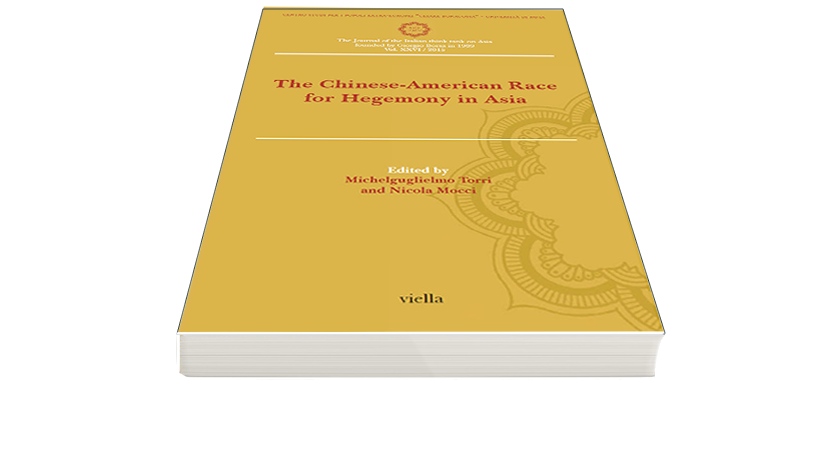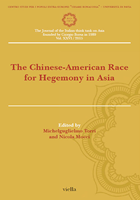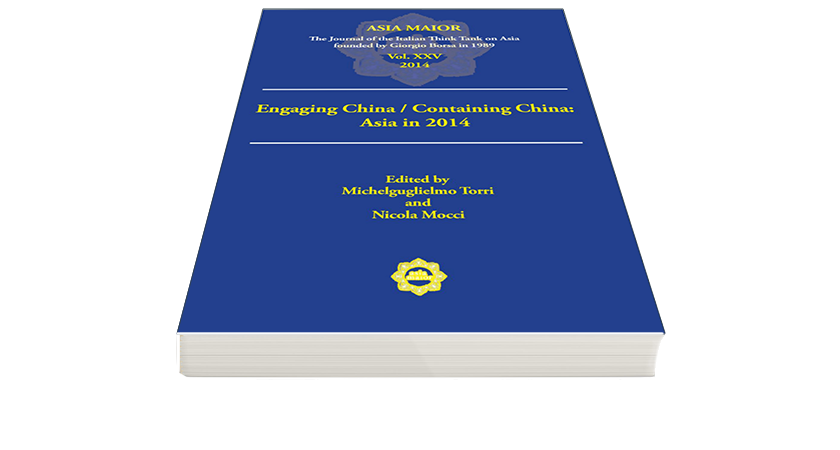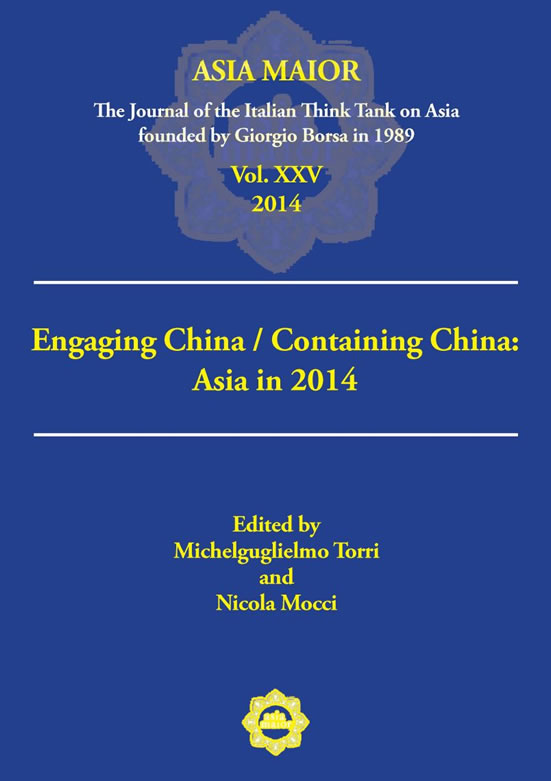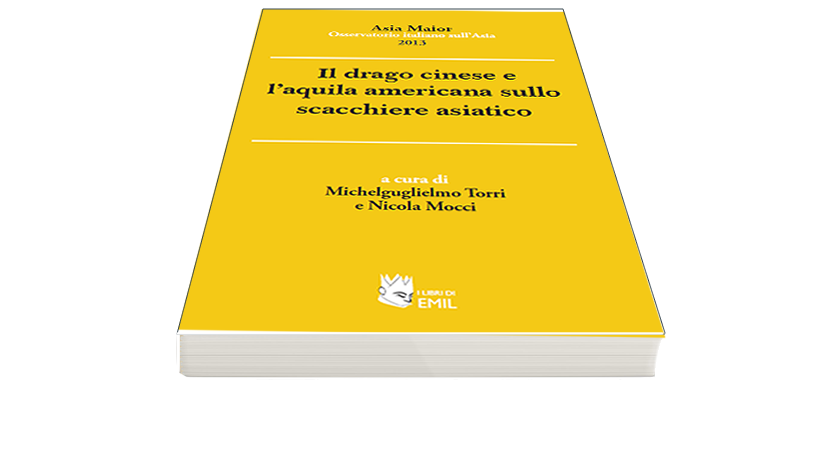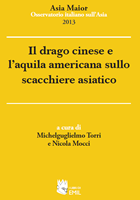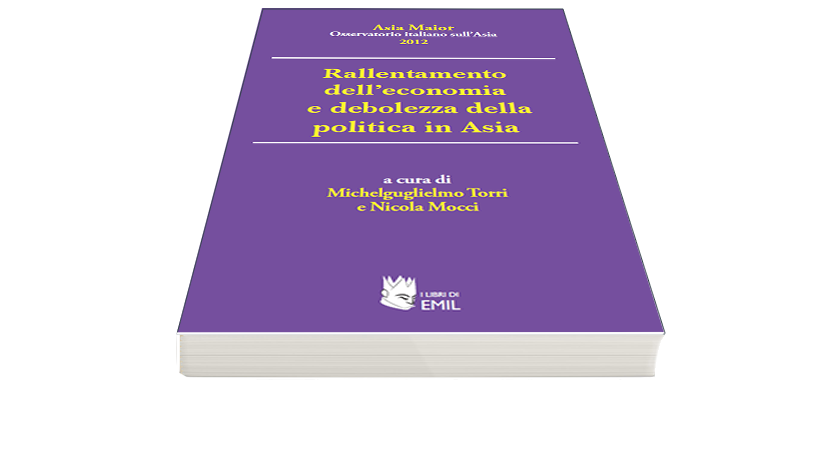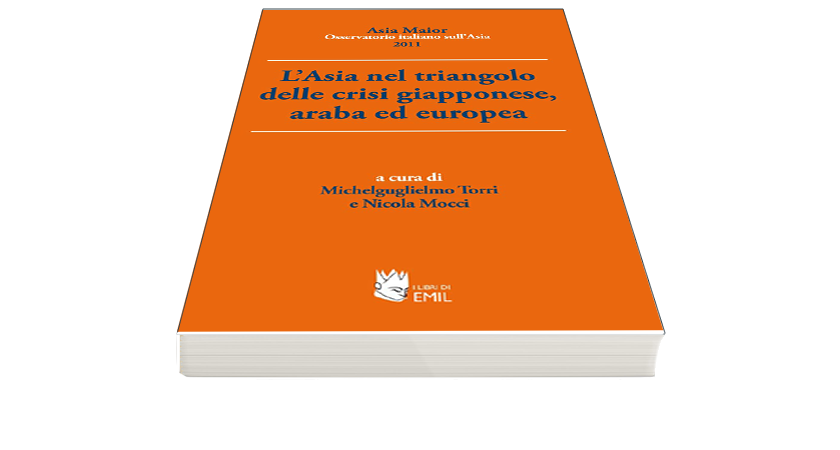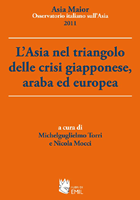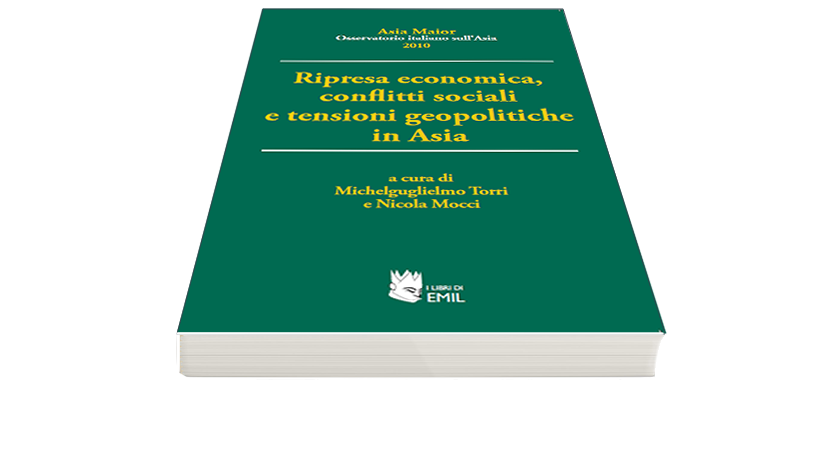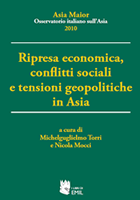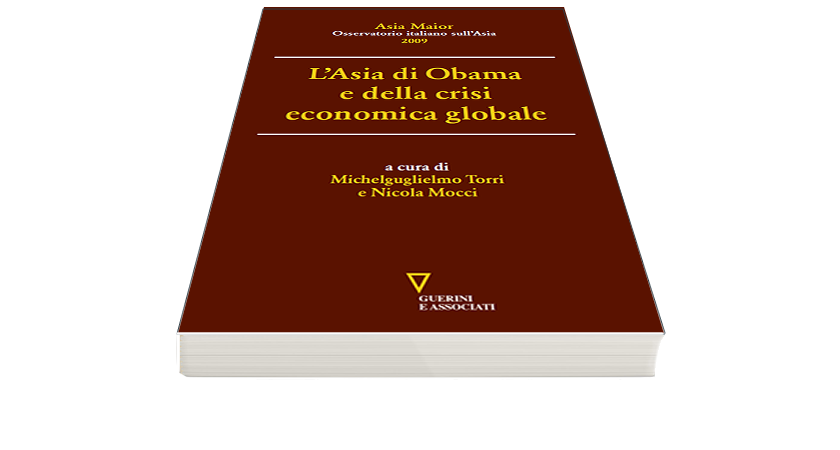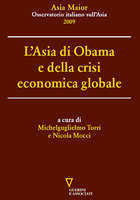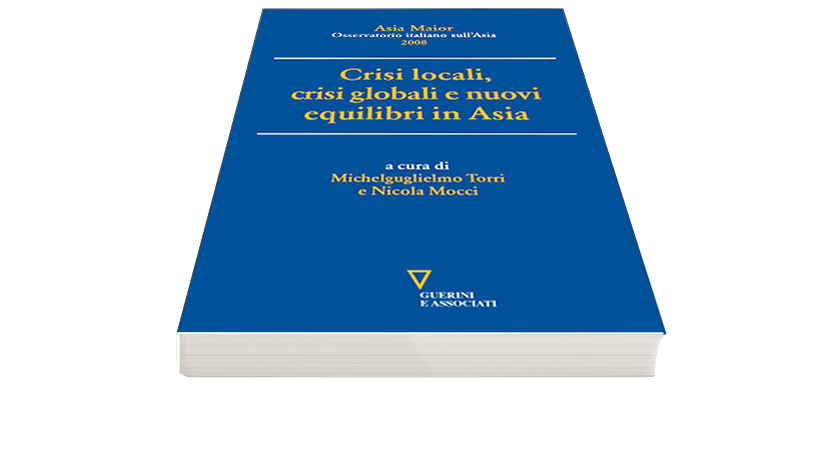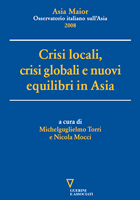Armenia 2024: Quo Vadis Yerevan? The difficult path out of the Russian trap
The last stage of the war between Armenia and Azerbaijan over Nagorno-Karabakh shook Southern Caucasus politics at its very foundation. The traditional parameters used for assessing and deciphering regional politics have been upended, as the alliances and alignments developed over the previous thirty years have collapsed and, in many ways, have being overturned. Moreover, the ongoing conflict in Ukraine only adds uncertainty to an already unpredictable regional scenario. At the heart of the regional upheavals lies the crisis of the decades-old alliance between Armenia and Russia, around which Yerevan had built its entire security policy. As a consequence, its failure to function during the Karabakh war left the country almost defenseless in the face of Azerbaijan’s military might. As over-dependence on Moscow turned into vulnerability, the diversification of Armenian foreign and security policies became an imperative with a view to ensure the country’s resilience to external shocks. The article examines Yerevan’s attempt to escape from the multifaceted «Russian trap» and explores the consequences and constraints of this endeavor on both international and domestic levels.
Keywords – Armenian foreign policy; Nagorno-Karabakh conflict; Southern Caucasus; Russia; European Union.
1. Introduction
The recent evolution and the epilogue of the conflict between Armenia and Azerbaijan over Nagorno-Karabakh has profoundly altered the parameters of regional politics in the South Caucasus. In the phase between the 2020 «44 Days War» and the September 2023 Azerbaijan’s recapture of the enclave with an «anti-terror operation», resulting in the masse escape of the local Armenian population and in the dissolution of the self-proclaimed Republic of Artsakh, the alliances and alignments developed over the previous thirty years have collapsed or, in many ways, have being overturned. Moreover, the upheaval in South Caucasus regional politics resulted from the shifting parameters of cooperation between local actors and external powers as much as from the altering patterns of interactions among external powers themselves. That is, upheavals in the year under review cannot be fully understood if not viewed in relation to the broader framework defined by the conflict in Ukraine, which rekindled power competition in the EU-Russian «shared neighborhood» and enhanced local actors’ strategic value along with their ability to extract benefits from competing powers. The regional upheavals went as far as suggesting to observers the end of Moscow’s «near abroad» [de Waal 2024] or the end of «post-soviet» era and studies [Pilibossian & Nersisyan 2024, 17 December; Aslund 2023, 4 January].
The turmoil in the Armenian-Russian alliance provides a prime illustration of the above-described trend. A traditional keystone of regional politics, with deep historical roots [Frappi 2022; Suny 1993], the alliance entered a spiral of crisis as a result of the war in Karabakh and, particularly, of Moscow’s lack of support during the last stage of the conflict. As a matter of fact, Russian inaction in the face of Azerbaijan’s military initiative – if not complacency with the aggressor, as some suggest [Sukiasyan 2024, p. 10] – was one of the key ingredients in Baku’s recipe for success [Frappi 2021, p. 26]. Russian inaction, in turn, exposed the contradiction inscribed in Yerevan’s over-dependence on a markedly asymmetric alliance or, as the chief of the Security Council, Armen Grigoryan, put it, the mistake of «putting all the security eggs in one basket» [Civilnet 2024, 20 May]. Thus, the last stage of the war finally showed how Yerevan’s overreliance on the alliance with Moscow had made Russia simultaneously the main guarantor of and the highest threat to Armenian national security [Shirinyan 2019].
On this backdrop, the present article aims at deciphering Yerevan’s attempt to escape the «Russian trap», understood as the all-encompassing asymmetric yet unreliable alliance to which Armenia had long delegated the primary responsibility for its own security. In particular, the article aims at framing the scope and the limits of the current spat in Armenia-Russia relation. It posits that, consistently with Armenia’s minor power status, escaping the Russian trap chiefly entails the effort to enhance the country’s resilience to external shocks by downgrading the over-dependency on Moscow and the resulting vulnerability. Consequently, escaping the Russian trap essentially means investing in the diversification of foreign and security policies. In no way does this mean breaking off relations with Moscow, something that would be unfeasible due to both the close interrelation among the various layers of regional politics and the striking systemic uncertainties. After all, Armenia decisionmakers seem to be aware of the limitations inscribed in the country’s positioning in the international hierarchy of power as well as the dangers caused by the increasing degree of systemic unpredictability. In Foreign Minister Ararat Mirzoyan words: «Small states strive to navigate the rough ocean [of unpredictability] as safely as possible, having in front of them the imperative to protect and preserve their own statehood, sovereignty, and territorial integrity» [RA 2024, 10 September]. Borrowing words from the chairman of the Center for Political and Economic Strategic Studies in Yerevan Benjamin Poghosyan, the new course of Armenian policies walks a difficult tightrope, as it entails being «anti-Russian enough to get something from the West and not anti-Russian enough to burn all the bridges with the Kremlin» [The Economist 2024, 1 August].
The article proceeds as follows. In the next section it introduces the diversification attempt pursued by the Armenian government by scaling down the ties with Russian Federation, on the one hand, and by enhancing dialogue and cooperation with the newly discovered partners in the Euro-Atlantic area, on the other. In the successive sections, it takes stock of the external and internal repercussions and limitations that constrain the diversification attempt. Accordingly, in the third, fourth, and fifth sections focus respectively on the regional, economic, and domestic domains of Armenia’s policy.
2. Armenian spat with Russia and the search for alternatives
The September 2023 Azerbaijani military takeover of Nagorno-Karabakh represented a clear watershed in Armenian perception of the alliance with Russia. Already on the eve of the «anti-terror operation», Armenian Prime Minister Nikol Pashinyan had denounced the «strategic mistake» Armenia had made in depending on just one partner in security matters [Osborn 2023, 3 September]. After that, the alliance started to be portrayed not only as ineffective, but also as a «threat to the national security and territorial integrity of Armenia», due to the failure to meet its responsibilities [Armenpress 2024, 28 February]. Thus, while Yerevan’s complaints against Moscow’s non-compliance to the alliance’s duties had occurred regularly since the 44 Days War – and particularly after the September 2022 attack on Armenian territory, vainly invoked by the government as a causus foederis [JAMnews 2022, 13 September] – it was only over the course of 2024 that Yerevan took the first concretes steps aimed at distancing Armenia from Russia both at bilateral and multilateral level, progressively closing the doors of cooperation which has previously left open.1
On a multilateral level, scaling back the security ties with Moscow meant primarily «freezing the relations» with the Collective Security Treaty Organization (CSTO) [Perelman 2024, 22 February]. CSTO, the traditional cornerstone of Russia-driven security cooperation in the former Soviet Union territory, had been joined by Armenia since its very inception, in 1992. Freezing the relations with CSTO meant, in turn, not contributing to the Organization’s budget, not joining its summits, and not taking part in its activities, including military drills [RFE/RL 2024, 8 May]. Moreover, confronted with CSTO legal argument for non-intervention in the Armenian-Azerbaijani conflict,2 by the end of the year Pashinyan declared that the relations with the Organization had passed the «point of no return» [Civilnet 2024, 4 December], signalling the de facto withdrawal from the organization.
At a bilateral level, security ties with Moscow were chiefly curtailed by downsizing the presence of Russian troops in Armenia. Consistently with a request issued by Yerevan in early March, by the summer Russian border guards completed the withdrawal from the Zvartnots Airport, ending a 32-year period of controlling Armenia’s air border [JAMnews 2024, 1 August]. Moreover, following a Pashinyan-Putin meeting at the Kremlin in early May, an agreement was reached for the withdrawal of Russian border troops deployed without a clear mandate after the 44 Days War along the border with Azerbaijan – i.e., in the Vayots Dzor, Tavush, Syunik, and Gegharkunik regions – as well as in the Ararat region [JAMnews 2024, 6 June]. The move was highly symbolic in nature, as the common patrolling of the borders has been one of the key drivers of Moscow’s policy in its near abroad ever since the dissolution of the Soviet Union. Yet, the merely symbolic nature of the withdrawal results from the enduring presence in Armenia of Russian military contingents. Besides Federal Security Service guards still patrolling Armenia’s border with Turkey and Iran, Russian contingents are still deployed at the Russian 102nd military base in Gyumri, and 3624th Airbase in Erebuni Airport, in accordance with a 2010 agreement due to expire in 2044 [Nazaretyan 2021, 4 March].
The loosening of Armenian-Russian security ties has been also accompanied by symbolic misalignment gestures in relation to the ongoing conflict in Ukraine. Reversing a balanced approach kept since the outbreak of the hostilities, at the end of May Armenia’s Ambassador to Ukraine paid a visit to Bucha where, besides delivering medical assistance, he lit candles at a memorial to the city residents killed following the invasion, in a gesture dubbed by Russian Ministry of Foreign Affairs as «overtly unfriendly» [Azatutyun 2024, 10 June]. As an «unfriendly step» was also decried by Russian authorities Armenia’s decision to join the International Criminal Court [France24 2024, 1 February], which had previously indicted Russian President Vladimir Putin for alleged war crimes and issued an arrest warrant. The gesture, while primarily motivated by the need to provide Yerevan with international legal tools aimed at holding Azerbaijan responsible for potential war crimes [Martirosyan 2023, 4 October], was nonetheless interpreted as symptomatic of the dramatic weakening of the close and consensual relationship previously enjoyed with Russia [Fridrichová & Kříž 2024, pp. 2, 5].
Actors in the Euro-Atlantic area have been quick to respond to Armenian foreign policy diversification needs and calls for improved cooperation. This was particularly the case with the European Union, as Yerevan started flirting with the idea of joining the block in the future. «Many new opportunities are largely being discussed in Armenia nowadays – Foreign Minister Ararat Mirzoyan declared in early March – and it will not be a secret if I say that includes membership in the European Union» [TRTWorld 2024, 8 March]. Just few days after Mirzoyan’s overture, the European Parliament – which in fact never failed to make its political support for Armenia explicit – approved by an overwhelming majority a resolution welcoming Yerevan’s expression of interest for EU membership as setting «the stage for a transformative phase» in bilateral relations. Significantly enough, the resolution also praised Yerevan’s resolve «to decrease its security dependence on the Russian Federation and include new players in its security mix», while decrying Moscow’s attempts «to undermine Armenian democratic credentials» and «spreading chaos and destabilization» [EP 2024, 13 March, p. 5, 2]. Just one month before, Josep Borrell, at that time EU High Representative for Foreign Affairs and Security Policy, in a press briefing with Mirzoyan, had announced the decision to launch work on an «ambitious» new EU-Armenia Partnership Agenda aimed at sending «strong signal of our mutual interest in a new strategic phase in our relations», including, inter alia, visa liberalization talks [EEAS 2024, 13 February]. The visa liberalization talks, saluted as «a recognition of Armenia’s efforts in strengthening its ties and shared values with the EU», started in September 2024 in accordance with the decision taken by the Council in mid-July [EC 2024, 9 September]. Overall, the so called «resilience and growth plan for Armenia» entailed a € 270 million grant to the country for 2024-2027 [EU 2024, p. 1].
EU was not alone in its attempt to support Armenian diplomatic diversification and economic development strategy. In April a trilateral high-level meeting with Pashinyan was jointly hosted by the EU and the US, exhibiting significant alignment on the effort «to stand shoulder to shoulder by Armenia» [DoS 2024, 5 April]. On its part, the US, besides increasing the level of bilateral assistance aimed at supporting the country’s economic resilience and strengthening democratic institutions, announced in June the intention to upgrade the status of the US-Armenia Strategic Dialogue launched in 2022 to the level of Strategic Partnership, as to enhance a structured approach to multifaceted bilateral cooperation [DoS 2024, 11 June].
Quick responses from western interlocutors came also in the security cooperation domain, thereby addressing the most urgent Yerevan’s need for diversification of international partnerships. That is, addressing the need to fill a «security gap» resulting from two main causes. The first was the failure of the «Diplomatization of Security» strategy pursued after 2022, aimed to resort to diplomatic pressure to deter Azerbaijani military initiatives [Kopalyan 2022]. The second was the de facto cessation of arms supplies from Russia, despite the procurement deal signed in 2021 [Reuters 2023, 24 November].
France has been at the forefront of Euro-Atlantic efforts aimed at supporting Armenia’s military deterrence needs – which also benefited from an increased cooperation with India.3 In February, in parallel with a Pashinyan’s highly symbolic trip to Paris,4 French Minister of the Armed Forces Sébastien Lecornu paid an unprecedented visit to Yerevan. Following up an agreement signed in October 2023 for the supply of anti-aircraft radar systems and a memorandum of understanding on the future delivery of French-manufactured military equipment [Armenpress 2023, 24 October], during Lecornu’s visit an arms procurement contract was signed, while an agreement aimed at training Armenian military personnel was reached [Bedevian 2024, 22 February]. In addition, since a June visit to France of a delegation led by Defence Minister Suren Papikyan – when a new agreement on the purchase of a modern artillery system was signed – Yerevan and Paris started discussing the possibility to widen the scope of military-technical cooperation with a view to support Yerevan’s plans for reform of the defence sector [JAMnews 2024, 19 June]. Eventually, bilateral cooperation reached its apex in December 2024, with the signing of a Defence Cooperation Program for 2025 covering «several dozen measures in almost all spheres of the armed forces’ operation». They included defence planning, military education, advisory support, and military training [JAMnews 2024, 12 December].
A significant widening of security cooperation also took place in Armenian relations with the EU, which thereby confirmed the latter’s reversal of its earlier «visibly invisible» role in South Caucasus conflict resolution [German 2007]. Indeed, the EU followed up on its 2022 decision to deploy a monitoring mission on Armenia’s border with Azerbaijan by providing Yerevan with military aid meant to strengthen the country’s resilience. On the same day the Council opened visa-liberalisation talks with Yerevan, it also approved the sending of military aid worth €10 million through the European Peace Facility instrument. It was a first-ever assistance measure to Armenia aimed at enhancing the logistical capacities of its armed forces, at fostering interoperability, and at improving protection of civilians in crises and emergencies [CoEU 2024, 22 July].
Finally, a limited in scope yet highly symbolic initiative also came on the US-Armenian side. In mid-July an 11-day joint military exercise was organized in the proximity of Yerevan. The «Eagle Partner 24» exercise, whose opening ceremony was attended by the US Ambassador to Armenia and Armenian Defence Minister Papikyan, was designed to increase interoperability of armed forces during peacekeeping and stability operations or, more pragmatically, to «deepen the friendships, deepen the partnership and move the ball forward ten yards», in the words of the US deputy director of the exercise [Miller 2024, 17 July]. Pushing the ball forwarder, in December Papikyan visited the US and met Defence Secretary Lloyd Austin for an «historic» meeting – as it was dubbed by the latter – whereby the US reaffirmed its resolve to continue supporting reforms in Armenia’s armed forces and include security cooperation in an enhanced bilateral partnership [Armenpress 2024, 6 December].
3. The unintended consequences of the diversification process: the regional «insecurity spiral»
Yerevan’s overtures to dialogue and cooperation with Euro-Atlantic partners have been as significant as cautious, at least in public statements. This caution may be explained either by the consciousness of the difficulties inherent in the process of integration in the West [Krikorian 2025] or, more generally, by the awareness of the multifaceted negative repercussions that such openings can have on Armenian security itself [Sukiasyan 2024]. After all, as Armen Grigorian put it, the depth of Armenia’s ties with Russia combined with the systemic uncertainties cannot but suggest a careful «step-by-step» approach to the diversification strategy [Civilnet 2024, 20 May].
Although dictated by contingent defence needs and by a wider attempt to broaden the spectrum of the country’s international relations, Armenian overtures to Western interlocutors have had significant negative repercussions on relations with Russia and Azerbaijan. Both promptly and punctually reacted to most of the abovementioned steps toward an increased Armenian-Western cooperation with harsh declaration and not-so-veiled threats of retaliation. Moscow manifested a tendency to interpret Yerevan’s engagement with Euro-Atlantic partners under the lenses of the ongoing conflict in Ukraine, as a «confirmation that the West is trying to turn Armenia into an instrument of its policy […] against Moscow» [Azatutyun 2024, 11 March]. This view, in turn, resulted in the not-so-veiled warning to Yerevan to avoid a «Ukrainian scenario» [Bedevian 2024, 25 July]. As evidence of a wider rapprochement between Moscow and Baku, Azerbaijan shared Russian view about Armenia’s Western partners’ selfish aims, accusing the latter of pursuing «unilateral and biased» policies [Eruygur 2024, 22 July] and «undermining stability» in the South Caucasus [Azatutyun 2024, 17 April]. The Azerbaijani government press agency went as far as saying that Western – and particularly French – support to Yerevan’s rearmament policy made a new war in Karabakh «inevitable» [APA 2024, 22 June]. Armenian-Western growing security cooperation, in turn, provided the formal reason for the perpetuation of Azerbaijan’s rearmament policy, a «number one priority» for Baku since – in President Ilham Aliyev’s words – «Armenia does not want peace; rather, it seeks to buy time and use this period to strengthen its military potential with the support of its foreign patrons» [PRAz 2024, 23 September].
Ultimately, the Armenian security diversification strategy generated a dangerous «insecurity spiral», i.e. a spiral of power and security competition that feeds on the fear that the opponent’s defensive moves are actually aggressively motivate and, consequently, require strategic countermeasures [Snyder 1984, p. 477]. Besides testifying the ongoing overturning of traditional regional alignments, the insecurity spiral contributed to an atmosphere of mutual mistrust among regional actors – and, particularly, between Armenia and Azerbaijan – which, in turn, didn’t help the Nagorno-Karabakh pace process to move forward. On the contrary, undermining Armenia’s most important foreign policy objective, it ended up in adding new hurdles on the path leading to the signing of a peace treaty, despite the positive signals registered during the year.
As far as the Armenia-Azerbaijan relationship was concerned, 2024 had opened with encouraging indications. In December, Azerbaijan and Armenia had agreed to an exchange of prisoners, while Yerevan also greenlighted Baku’s bid for hosting the UN Climate Change Conference (COP 29) [PMRA 2023, 7 December]. These signals, in turn, justified widespread optimism among analysts and decision-makers about the possibility of signing a peace treaty by the COP29 meeting, set for November 2024. Furthermore, the belligerents agreed to sign a concise document outlining key principles for lasting peace while postponing the resolution of most contentious issues, such as reopening communications between Azerbaijan and the Nakhchivan exclave and delimitating borders. This decision seemed to ease the way to the normalization of bilateral relations. [Borshchevskaya 2024, 19 March]. Encouraging signals also came in the form of an April agreement on the delimitation of the borders in the Tavush area – a point of contention with the potential to trigger new military clashes. Following the 8th meeting of the bilateral State Commission tasked with the delimitation issue, representatives of the two countries agreed to restore the borders as set by the most recent Soviet maps with the consequent return to Azerbaijan of four border villages in the Tavush area that remained under Armenian control [MFA 2024, 19 April].
The positive atmosphere surrounding Yerevan-Baku talks progressively dissolved over the year, while Pashinyan no-show at COP29 certified the failure of finalizing a peace agreement and the renewed stalemate in negotiations. The regional strategic polarization and resulting spiral of insecurity bore a significant part of the responsibility for the failure, under two perspectives both related to Baku’s new negotiating conditions. The first had to do with the negotiating format and the refusal of third-party mediation. Long opposed to the continuation of the thirty-years-old OSCE Minsk Group mediation mandate [PRAz 2022, 12 January], Azerbaijan clarified in January that, despite Armenia’s preferences, Yerevan and Baku «don’t need any guarantors» and should instead solve their problems bilaterally avoiding the negotiations «to become a geopolitical issue» [PRAz 2024, 10 January]. Thus, despite the hopes raised in February by a German attempt to initiate a mediation [JAMNews 2024, 19 February], the trilateral meeting organized by Chancellor Olaf Scholz was a mere exception to what seemed to have become a mandatory negotiating principle.5 In turn, the refusal to accept third-party mediation widened the already broad asymmetry in bargaining power between Armenia and Azerbaijan, leaving the former more vulnerable to the latter’s maximalist approach to the peace process. This helped framing the second ground where the insecurity spiral intersected with the negotiations, which has to do with their contents.
With a view to finalize a peace agreement, Baku added two more principles and two preconditions [PRAz 2024, 18 December]. The first principle, ostensibly resulting from the ongoing strategic polarization, was the non-deployment of third countries’ forces on the mutual border, and the consequent withdrawal of the EU Mission in Armenia (EUMA), deployed on the Armenian side of the border with Azerbaijan. The second was the cessation of the ongoing «lawsuit warfare», i.e. the mutual commitment to refrain from filing international lawsuits against each other. The preconditions to this commitment on Yerevan’s part was the dissolution of the OSCE Minsk Group, on the one hand, and, on the other, the amendment of the Armenian Constitution as to eliminate its supposed territorial claims against Azerbaijan. In fact, while Prime Minister Pashinyan repeatedly reaffirmed that «Armenia fully recognizes the territorial integrity of Azerbaijan» [Sahakian& Musayelian 2023, 18 April],6 the first article of the Constitution still recalls the fundamental principles enshrined in the September 1990 Declaration of Independence [PRAr 2015], which in its preamble calls for the «Reunification of the Armenian SSR and the Mountainous Region of Karabakh» [GRA 1990, 23 August]. Such conditions and preconditions represented the main stumbling block for the finalization of the peace agreement in 2024. While the parties shared the view that its text was 80% complete, nonetheless they proved unable either to compromise on the abovementioned points [AIR 2024, 4 November], or to remove them altogether postponing their solution – as it was unsuccessful proposed by Yerevan at the end of August [Eruygur 2024, 10 September].
As a demonstration of the difficulties inscribed in the attempt to untie the regional security knot, the stalemate of the peace process had negative repercussions on Armenia-Turkey normalization process launched in 2022. This, in turn, represented a key priority for the Pashinyan government, with a view to open the border between the two countries and gain a lifeline to regional and international markets. Notwithstanding progresses in the bilateral talks,7 the overall process confirmed to be closely intertwined with the parallel Yerevan-Baku negotiations, as the unyielding Azerbaijani-Turkish axis stands as the main exception to the upheaval of regional alignments. For all the «no-precondition rhetoric» which surrounds the Armenian-Turkish talks, not only did Ankara make the normalization of relations conditional on the signing of a peace agreement between Armenia and Azerbaijan [Frappi 2023, p. 468], but also aligned itself with the demands and preconditions put forward by Baku. This is particularly the case for the latter request to amend the Armenian Constitution [Barseghyan 2024, 9 December], which meets Ankara’s analogous aversion to the document’s indirect claims on «Western Armenia» – namely, Eastern Turkey – as well as to «the task of achieving international recognition of the 1915 Genocide» [GRA 1990, 23 August].
4. Security vs. economy: Armenian diversification dilemma
In escaping the Russian trap, Armenian government is facing a «diversification dilemma». While there is an urgent need to broaden the spectrum of international relations, the overwhelming weight exerted by Russia on Armenian economy makes diversification difficult to achieve and, in many ways, unprofitable – especially in the short term and with a view to the 2026 parliamentary elections. Indeed, much of the record GDP growth experienced after 2021 owes to the increased trade relations with Russia which, in turn, benefited from Armenia acting as a conduit for international trade flows aimed at circumventing the sanctions imposed on Moscow. Such a «middleman role» resulted in the Armenia-Russia bilateral turnover skyrocketing from US$ 2.6 billion in 2021 to 12.4 in 2024 [ARMSTAT n.a.], making Russia by far the first trade partner of Armenia. Moreover, the recent growth in Armenian GDP benefited significantly also from the relocation of Russian citizens to Armenia, which boosted domestic consumption [Chervyakov & Giucci 2023].
In comparison to Armenian-Russian turnover, the one with the EU paled,8 as a result of both normative and logistic disadvantages. From the first perspective, Armenia’s membership in the Eurasian Economic Union (EAEU) ensured tax-free exchanges of goods and services, facilitating the trade flow both with its participants and with its trade partners – such as China [WB 2024, pp. 32-33]. Quite on the contrary, as Armenia progressed from lower middle-income country status to an upper middle-income one for three consecutive years since 2018, in 2022 it lost the tariffs benefits granted by the EU under the Generalised Scheme of Preferences Plus [EC 2023, 21 November] and, therefore, trading goods became more costly. Moreover, Armenian exports towards the EU were also hampered by the set of rules and standard required to access the EU market, which Armenian companies have difficulty complying with, adding administrative and legal layers to the difficulties of improving trade relations with the EU [Terzyan & Grigoryan 2024, p. 14-15]. This, in turn, was one of the main impediments to grasp the full yet limited potential of the Comprehensive and Enhanced Partnership Agreement which, into full force in 2021, set the priorities to strengthen bilateral relations with the EU within the limits imposed by Yerevan’s participation in the EAEU. Moving from normative to logistic obstacles, Armenia suffered from an impactful «connectivity gap» resulting from both regional geography and politics. Here the disadvantages stemming from a landlocked condition are compounded by the closure of the borders with Azerbaijan and Turkey because of the Nagorno-Karabakh war. The connectivity gap severely narrowed the trade flows to routes through Iran and Georgia, limiting overall Armenian integration into global economy [WB 2024]. Moreover, it resulted in an increase in overall transportation costs, with a detrimental effect on the competitiveness of national products [Terzyan & Grigoryan 2024, p. 5].
Turnover with Russia was significant not only in quantitative terms but also in qualitative ones, exposing the overall degree of Yerevan’s dependence. This was particularly true for Russia’s lion share in the country’s total imports of key commodities, which decisively impinged upon the Armenian food and energy security.9 In turn, the risk of over-dependency on key imports turning into vulnerability to Moscow’s pressures or blackmails was not only high but has also been recurrent in regional politics. Hence, in the current environment, economic leverage was an instrument in the Russian hybrid warfare toolkit aimed at retaining influence in the South Caucasus [Meissner and Leitner 2024]. In 2024 there was no lack of examples of its use. For instance, in criticizing Armenian participation in a conference dedicated to Ukrainian Food Security in the context of the Kiev-sponsored «Ukraine Peace Formula» initiative, Maria Zakharova, the spokeswoman of the Russian Ministry of Foreign Affairs, issued a veiled threat recalling Armenian dependence on Russian grain [Barseghyan 2024, 23 September]. Similarly, in outlining the potential repercussions of opting for EU membership over the EAEU one, Russian Deputy Prime Minister Alexei Overchuk warned Armenia that this would lead to higher energy and food prices, while exports could drop by 70-80% [Ananyan 2025, 16 January]. Making vulnerability worse, the connectivity gap significantly increases Armenia’s exposure to the risk of disruption of trade flows either for political or technical reasons. Since fall 2023 and over the course of 2024 this has been the case with Armenian exports to Russia, which were either hit by import bans from Russian health authorities or stuck by adverse weather conditions at the Russian-Georgian border crossing of Upper Lars [Saribekian 2024, 31 July; Aravot 2024, 10 August].
At a wider look, Russian overwhelming weight on Armenian economy has a deeper and structural dimension, because of the control still exerted on key national assets – from energy to transport, from telecommunications to mining, finance, and insurance. This overdependency, in turn, came as a byproduct of the military alliance, consistently with the logic of inseparability of security and economic cooperation, which also led Armenia to join the EAEU instead of pursuing cooperation with the EU [Frappi 2023, p. 455-7]. Moreover, the wide presence of large Russian companies in Armenia’s economy makes them a key taxpayer and contributor to Armenian coffers [Eurasianet 2024, 17 May]. Also, Russia is still by far the first source of foreign investments to the country – accounting for 17% of the total net stocks at the end of 2023, worth € 2.4 billion [ARMSTAT 2024, p. 590]. Finally, another significant source of dependence on Russia, which may arguably be considered as structural, lies in the remittances from Armenian migrant workers. While the influx of personal remittances has been shrinking over the last few years, in 2023 it still accounted for a 6% of the GDP [WBDB n.a.], while the remittances from Russia in 2024 made up for the 42% of its total amount [CBA n.a.].
5. The domestic side of the coin: increasing polarization, decreasing consensus
The overlapping of the external and internal dimensions of the governmental attempt to escape the Russian trap goes well beyond the economic domain. The urgency to reinvent foreign and security policies also affects the domestic political-institutional environment by exacerbating a trend toward polarization originating from the 2018 Velvet Revolution and worsened by the Karabakh military debacle.
In 2024, the clearest manifestation of the polarization trend came from «Tavush for the Sake of Homeland», a protest born out of the April agreement on border delimitation and gathered around the figure of Archbishop Bagrat Galstanyan. Its aims, scope and evolution highlighted the then ongoing polarization trend under four perspectives. The first and foremost was the accusation leveled at the government, to bear «a defeatist mindset and a commitment […] to serve the Turkey-Azerbaijan tandem» [Nazarian 2024, 20 August]. It was an accusation which went up to the point of considering the Prime Minister as a «traitor» or a «Turkish agent» [Pambukhchyan 2024, 23 July]. Similar accusations were made against the government after the initiation of a process aimed at adopting a new Constitution, to be drafted by the end of 2026 and approved by referendum in 2027 [Armenpress 2024, 29 August]. While a constitutional reform plan is as old as Pashinyan’s tenure as prime minister, in its current stage the process of adopting a new constitution is manifestly influenced by the need to sign a peace agreement with Baku and normalize relations with both Azerbaijan and Turkey. Thus, a new Constitution stands as a prerequisite for the diversification of the country’s foreign policy and economic development or, in Pashinyan words, as a key tool to make Armenia «more competitive and more viable in the new geopolitical and regional conditions» [PMRA 2024, 19 January].
Secondly, the Galstanyan’s protest movement clarified both the nature of the institutional opposition to the government and its transnational links. Started as an alleged apolitical movement aimed at impeding «the unacceptable process of border demarcation» [JAMNews 2024, 7 May], the Archbishop’s initiative quickly took on anti-government connotations, requesting the Prime Minister’s resignation while marching from Tavush to Yerevan. In doing so, it attracted institutional supporters both from the highest ranks of the Armenian Apostolic Church and among the representatives of the power structure ousted by the Velvet Revolution, namely two political forces which used to enjoy an informal alliance before 2018 [Atanesian 2018, 20 July] and never spared harsh criticism of Pashinyan ever since. Moreover, the traditionally strong links between Russia and this reactionary faction – the so called «blacks» in Pashinyan narrative, as opposed to the reformist «whites» [Pambukhchyan 2024, 23 July] – enlarged the scope of anti-government opposition well beyond the country’s borders. These links expose yet another layer of the internal-external short-circuit affecting Armenian politics, built upon the accusations levelled against Moscow of running a «campaign of threats and disinformation» against the leadership in Yerevan [Azatutyun 2024, 8 August]. Considering wide coverage of the Galstanyan movement given by Russian-controlled media, it is not surprising that accusation of exploiting «fifth columns» in the country for the sake of weakening the government were made by media close to the ruling party [JAMNews 2024f], just a few months before an alleged coup attempt with links to Russia was thwarted by the National Security Service [Armenpress 2024, 18 September].
Third, the evolution of the protest movement served as a mirror to the opinions of the Armenian public amid the ongoing political and institutional struggle. Started as the largest anti-government movement since the war, it progressively lost momentum and supporters until its de facto failure. Far from being the result of the consensus around the government, the movement’s implosion was rather the demonstration of a widespread disaffection from politics among the Armenian public. The latest poll carried out in the country by the International Republican Institute accurately capture this trend. On the one hand, it showed a sharp decline in consensus for Pashinyan and his government. While still being the most trusted political figure, the leader of the Velvet Revolution’s rating stands at a mere 16% – a figure falling to 7% among the respondents between 18 and 35 years. Moreover, between 2018 and fall 2024 the degree of satisfaction with the government fell from 82% to 46% [IRI 2024, pp. 14, 26]. On the other hand, as trust in the government diminishes, there is no corresponding boost in support for the figures or parties in the opposition, exposing the growing degree of public disaffection. All in all, 61% of the respondents – and 76% of the youngest ones – declare not to trust any politician or public person. The dissatisfaction affects also the Armenian Apostolic Church, whose approval rate fell by 26% over the last five years. [IRI 2024, pp. 14, 29].
Lastly, and arguably most importantly, the Tavush movement and the wider border demarcation issue reflected both tangible and intangible aspects of the struggle between the government and its critics, along with the challenges of the diversification path then walked. In defending the decision to return the border villages to Azerbaijan, the Prime Minister used to hold a map of the «Real Armenia», as opposed to the «Historical Armenia». While the former is understood as the country falling within the internationally recognized borders, the latter is a broader imagined homeland built upon historical memories of lost lands [PMRA 2024, 25 May; PMRA 2024, 10 April]. Thus, the demarcation process does not merely entail re-drawing the borders of the state, but also re-imagining the boundaries of the nation and the resulting national interest. Juxtaposing the real country with the imagined homeland, Pashinyan opened a new chapter in the long-standing ideological struggle between a reductionist and an holistic understanding of the nation, as well as between the promoters of a national mission aimed at rectifying historical injustices and the advocates of an «Armenian-first» approach to national interest, which shaped the formative years of the «Third Republic» – i.e., the one born on the ashes of the Soviet Union [Frappi 2023, p. 451-2]. Moreover, the process aimed at redefining the borders of the state and the boundaries of the nation intersected the attempt at diversifying the country’s foreign and security policies. In fact, in the government view and narrative, the confusion between the Real and Historical Armenia resulted in adverse effects at international level. On the one hand, with a reference to Azerbaijan and Turkey, it brought about «a permanent guarantee of [Armenian] enmity with a group of countries, and a guarantee that those countries will have a reason and an explanation for pursuing an aggressive policy». On the other, and with a clear reference to Russia, the attempt to restore the Historical Armenia allowed «some countries […] to put a collar on the Republic of Armenia and constrain its actions as an independent state» [PMRA 2024, 25 May]. In its attempt to push a new state and national narrative, the government delves into the polarization fault lines.
Pashinyan’s rhetoric targeting the pillars of the «Historical Armenia» ideology – which has been a constituent part of the sense of patriotism which developed up to the Genocide [Sassounian 2024] – is striking a raw nerve of national consciousness. And this happens not only within the country but especially among the diaspora, widening the ranks of his detractors and deepening the divide between the government and the opposition.
6. Conclusions
The last stage of the Nagorno-Karabakh conflict dramatically exposed the vulnerability resulting from Armenia’s over-dependence on Moscow’s security guarantee. The proven unreliability of the latter urged Yerevan to escape the Russian security trap by means of diversification of the country’s foreign and security policies. While in its drive towards diversification Yerevan benefited from the support of France, the EU, and the US, the overall path was still hampered by a multidimensional set of external and internal obstacles, limitations, and contradictions.
The first «diversification dilemma» resulted from the clash between security and economic needs. While the search for security pushed the country away from Russia, economic necessity kept it steadily in Moscow’s orbit. Breaking economic ties with Russia was not only concretely unfeasible, but also unprofitable, at least over the short-term. The government’s answer to the dilemma seems to come from a hybrid strategy blending compartmentalization of security and economic relations with Russia with a tailored and flexible cooperation with Western partners. Yet, in the mid- to long-term the incompatibility between the membership in the EAEU and the integration path in the EU may result in hard choices to Yerevan, whose repercussions may go well beyond the mere economic domain. In addition, for a landlocked country suffering from the closure of its eastern and western borders, diversifying foreign economic relations entails first and foremost the need to normalize relations with both Azerbaijan and Turkey. This, in turn, highlights once again the close interrelation between the various layers of regional politics and takes the overall assessment back to the wider diversification attempt.
The second contradiction of the diversification path walked by Armenia during the period under review lies in its unintended yet close correlation with the Russian-Western confrontation over Ukraine. On the one hand, the correlation increases Yerevan’s capability to extract benefits from its partners in the Euro-Atlantic area; on the other, it potentially leaves the outcome of Armenian diversification process open to the still unpredictable result of the current power confrontation in Eastern Europe. That is, much of the outcome of the diversification effort falls beyond Yerevan’s control. Consistently with the limited resources available to a small power, Armenia cannot but pursue external balancing strategies, built upon increased cooperation with the West. This, in turn, means that the attempt to escape the Russian trap depends to a great extent on the continued support of the Euro-Atlantic partners. As Armenia’s capability to extract benefits from Western partners is largely dependent on the ongoing confrontation with Russia over Ukraine, the overt support coming from the former may prove to be short-lived and, in any case, limited.
The close correlation with the Russian-Western confrontation resulted in a third and crucial contradiction – or unintended consequence – of the attempt to escape the Russian trap, namely the «insecurity spiral» unfolding at regional level. As a matter of fact, the wider diplomatic tensions engendered a short circuit between the Armenian government’s main foreign policy objectives, namely diversifying its security policy on the one hand and finalizing a peace agreement with Baku on the other. Escaping the Russian security trap and normalizing relations with Azerbaijan – and consequentially with Turkey – are two sides of the same coin. It is impossible to effectively pursue the former without achieving the latter. Yet, the greater is Armenian cooperation with the West, the deeper is its isolation vis-à-vis Baku. Here, the end of the decade-old «pax Russica» and Baku’s refusal of a third-party mediation involving «biased» Western actors, deprives Armenia of the former negotiating mechanisms without substituting them with new ones. Consequentially, Yerevan stands alone in face of Azerbaijan’s maximalist conditions for peace, forced to make concessions that are hardly acceptable at home.
The domestic picture is neither rosier nor less thorny than the external one. Here, the main contention points in the peace process – namely the delimitation of the state borders and the requested changes to the Constitution – has rekindled the political and institutional polarization between «blacks» and «whites» in a scenario shaped by a growing public disaffection from politics. What’s more, the polarization trend is exacerbated by the immaterial facet of the current national debate. In its attempt to put forward a new vision for the country’s development, the Government, acting domestically much less cautiously than in the foreign domain, has been rhetorically targeting the key pillars of national self-identification at home and in the diaspora, thereby widening and tightening the ranks of the opposition. Arguably, this stands as the main challenge to the diversification effort. The path out of the Russian trap toward a diversified foreign policy entails significant tangible and intangible sacrifices. Lacking adequate national cohesion, not only the process risks derailing but also endangers the wider transformation path walked since the 2018 Velvet Revolution.
Bibliography
[AIR 2024, 4 November] AIR Center for Analysis of International Relations, 2024, 4 November, ‘Comments by AIR Center’s Chairman of the Board, Farid Shafiyev, on the peace process between Azerbaijan and Armenia’.
Ananyan, Robert, 2025, 16 January, ‘Armenia makes a strategic turn from Russia towards the West’, BNE Intellinews.
[APA 2024, 22 June] Azəri Press Agentliyi 2024, 22 June, ‘Üçüncü Qarabağ müharibəsi qaçılmazdır: Parislə İrəvan Azərbaycanın «qırmızı xətt»ini keçir’ (A third Karabakh war is inevitable: Paris and Yerevan cross Azerbaijan’s «red line»).
[APA 2024, 5 December] Azəri Press Agentliyi, 2024, 5 December, ‘Reason why Azerbaijani and Armenian FMs did not meet in Malta revealed: Baku rejected Blinken’s proposal’.
Aravot, 2024, 10 August, ‘Armenian Drivers «Stuck» In Long Queues At Russo-Georgian Border’, Aravot – Armenian News.
Armenpress, 2023, 24 October, ‘France to sell Thales GM 200 radars and Mistral air defense systems to Armenia’.
Armenpress, 2024, 28 February, ‘Pashinyan warns of potential de jure freeze of Armenia’s activities in CSTO if the current process continues’.
Armenpress, 2024, 29 August, ‘Constitutional reforms referendum planned for 2027’.
Armenpress, 2024, 18 September, ‘Armenia thwarts coup attempt’.
Armenpress, 2024, 6 December, ‘Armenian Defense Minister, U.S. Secretary of Defense discuss cooperation’.
[ARMSTAT 2024] Statistical Committee of the Republic of Armenia, 2024, Statistical Yearbook of Armenia, Yerevan.
[ARMSTAT 2025], Statistical Committee of the Republic of Armenia, 2025, Energy Balance of the republic of Armenia, 2023.
[ARMSTAT n.a.], Statistical Committee of the Republic of Armenia, n.a., External trade database.
Aslund, Anders, 2023, 4 January, ‘The End of Post-Soviet Studies?’, Kyiv Post.
Atanesian, Grigor, 2018, 20 July, ‘Armenia’s uprising spreads to its church’, Eurasianet.
Azatutyun, 2024, 11 March, ‘West Again Accused Of Using Armenia Against Russia’, Radio Free Europe/Radio Liberty Armenian Service.
Azatutyun, 2024, 17 April, ‘Azerbaijan Accuses France Of «Undermining» Normalization With Armenia As Paris Recalls Envoy’, Radio Free Europe/Radio Liberty Armenian Service.
Azatutyun, 2024, 10 June, ‘Russia Condemns Armenian Officials’ Trip To Ukrainian Town’, Radio Free Europe/Radio Liberty Armenian Service.
Azatutyun, 2024, 8 August, ‘Moscow Again Lashes Out At West Over Armenia’, Radio Free Europe/Radio Liberty Armenian Service, 8 August.
Azatutyun, 2024, 26 September, ‘Armenian Defense Spending Set For Further Rise’, Radio Free Europe/Radio Liberty Armenian Service.
Barseghyan, Arshaluys, 2024, 23 September, ‘Russia «reminds» Armenia of its dependence on Russian grain’, OC Media.
Barseghyan, Arshaluys, 2024, 29 November, ‘Outrage in Armenia over Putin’s controversial statement on CSTO’, OC Media.
Barseghyan, Arshaluys, 2024, 9 December, ‘Turkey renews calls for ‘Zangezur corridor’, OC Media.
Bedevian, Astghik, 2024, 22 February, ‘France Reportedly Ships More Military Equipment To Armenia’, Radio Free Europe/Radio Liberty Armenian Service.
Bedevian, Astghik, 2024, 25 July, ‘Moscow Tells Yerevan To Avoid «Ukrainian Scenario»’, Radio Free Europe/Radio Liberty Armenian Service.
Borshchevskaya, Anna, 2024, 19 March, ‘Are Azerbaijan and Armenia Heading to Peace?’, The Washington Institute for Near East Policy, Policy Analysis.
[CBA n.a.] Central Bank of Armenia, n.a., Transfers of individuals sent to and received from abroad through commercial banks of RA by countries, External Sector Statistics (www.cba.am/en/sitepages/statexternalsector.aspx).
Chervyakov, Dmitry, & Ricardo Giucci, 2023, ‘Relocation of people from Russia to Armenia: results of 2nd survey and update of economic implications’, German Economic Team, Policy Study 2/2023.
Civilnet, 2023, 20 April, ‘Armenia begins process to construct customs post on Turkey border’.
Civilnet, 2024, 20 May, ‘Security Council chief Grigoryan weighs options for reducing Armenia’s dependencies’.
Civilnet, 2024, 4 December, ‘«Point of no return»: Pashinyan signals definitive split from Russia-led military alliance’.
[CoEU 2024, 22 July] Council of the European Union, 2024, 22 July, European Peace Facility: Council adopts the first ever assistance measure in support of the Armenian Armed Forces, Press release.
[DoS 2024, 5 April] US Department of State, 2024, 5 April, ‘Secretary Antony J. Blinken With European Commission President Ursula von der Leyen, Armenian Prime Minister Nikol Pashinyan, and High Representative of the European Union for Foreign Affairs and Security Policy Josep Borrell Before Their Meeting’, Press Releases.
[DoS 2024, 11 June] US Department of State, 2024, 11 June, ‘Joint Statement on U.S.-Armenia Strategic Dialogue Capstone’, Press Releases.
de Waal, Thomas, 2024, ‘The End of the Near Abroad’, Carnegie Endowment for International Peace.
[EC 2023, 21 November] European Commission, 2023, 21 November, The EU Special Incentive Arrangement for Sustainable Development and Good Governance [GSP+] assessment of the Republic of Armenia covering the period 2020-2022, SWD[2023] 367 final.
[EC 2024, 9 September] European Commission, 2024, 9 September, EU and Armenia Launch Visa Liberalisation Dialogue, News Article.
[EEAS 2024, 13 February] European Union External Action, 2024, 13 February, Armenia: Press remarks by High Representative Josep Borrell after the EU-Armenia Partnership Council.
[EP 2024, 13 March] European Parliament, 2024, 13 March, Closer ties between the EU and Armenia and the need for a peace agreement between Azerbaijan and Armenia. European Parliament resolution of 13 March 2024 on closer ties between the EU and Armenia and the need for a peace agreement between Azerbaijan and Armenia, P9_TA(2024)0158.
Eruygur, Burç, 2024, 22 July, ‘Azerbaijan rejects EU’s $ 10.8M military aid package for Armenia as erroneous and dangerous step’, Anadolu Ajansı.
Eruygur, Burç, 2024, 10 September, ‘Azerbaijan rejects calls to sign draft peace deal with Armenia without non-agreed provisions’, Anadolu Ajansı.
[EU 2024] European Union, 2024, ‘A resilience and growth plan for Armenia’, Luxembourg: Publications Office of the European Union.
Eurasianet, 2024, 17 May, ‘Tax Records Tell Tale of Continuing Economic Dependency on Russia’.
France24, 2024, 1 February, ‘Armenia joins International Criminal Court, Moscow decries «unfriendly step»’.
Frappi, Carlo, 2021, ‘Il conflitto in Nagorno-Karabakh. Contesto e considerazioni politico-diplomatiche e strategico-militari’, Rivista Militare, 1/2021: 26-29.
Frappi, Carlo, 2023, ‘Armenia 2022: Looking for a way out of the Nagorno-Karabakh impasse’, Asia Maior, XXXIII/2022: 447-477.
Fridrichová, Kateřina, & Kříž Zdeněk, 2024, ‘Diminished Hegemony: Consequences of the Russian Invasion of Ukraine’. Problems of Post-Communism, 1-13.
German, Tracey C., 2007, ‘Visibly Invisible: EU Engagement in Conflict Resolution in the South Caucasus’, European Security, 16(3-4): 357-374.
[GRA 1990, 23 August] Government of the Republic of Armenia, 1990, 23 August, Armenian Declaration of Independence.
[IRI 2024] International Republican Institute, 2024, ‘Public Opinion Survey: Residents of Armenia’, Center for Insights in Survey Research, September 2024.
[ISS 2024] The International Institute for Strategic Studies, 2024, ‘The Military Balance 2024’, London: Routledge.
JAMnews, 2022, 13 September, ‘Military action on the Armenian-Azerbaijani border, casualties reported’.
JAMNews, 2024, 19 February, ‘Opinion: «If Baku doesn’t return to Western format, it may lose a lot»’.
JAMNews, 2024, 7 May, ‘Behind the movement against the borders demarcation – Russia and the 5th column in Armenia’.
JAMnews, 2024, 6 June, ‘«All Russian border guards must leave Armenia» Opinion’.
JAMnews, 2024, 19 June, ‘«Yerevan сould gain more»: On military contracts with France’.
JAMnews, 2024, 1 August, ‘«Russian border guards leaving the airport strengthens Armenia’s sovereignty» – Opinion’.
JAMnews, 2024, 12 December, ‘Armenia and France set to deepen military cooperation in 2025’.
Kopalyan, Neres, 2022, ‘Diplomatization of Security’, EVN Security Report, September.
Krikorian, Onnik, 2024, 7 May, ‘Opinion: Armenia-Azerbaijan Gas Co-operation: Pipe Dream or Reality?’, Commonspace.eu.
Krikorian, Onnik, 2025, ‘Armenia Moves Toward Europe While Still Dependent on Russia’, Eurasia Daily Monitor, 22(9).
Le Monde, 2024, 21 February, ‘Armenian Resistance fighter joins France’s Panthéon heroes’.
Martirosyan, Samson, 2023, 4 October, ‘Armenia joins the ICC in a geopolitical tightrope’, Justiceinfo.
Meissner, Hannes, and Johannes Leitner, 2024, ‘Economic Cooperation and Russia’s Geopolitical Strategy in the South Caucasus’, Russian Analytical Digest, 322:15-20.
[MFA 2024, 19 April] Ministry of Foreign Affairs of the Republic of Armenia, 2024, 19 April, Press release on the outcome of the 8th meeting of the State Commissions on the delimitation of the state border between Armenia and Azerbaijan.
Miller, Vira, 2024, 17 July, ‘Eagle Partner 24 kicks off in Yerevan, strengthening U.S.-Armenia military ties’, United States European Command.
Nazaretyan, Hovhannes, 2021, 4 March, ‘Russia’s Increasing Military Presence in Armenia’, EVN Report.
Nazarian, Ara, 2024, 20 August, ‘Efforts to build a «real Armenia»’, The Armenian Weekly.
Nersisian, Leonid, & Sergei Melkonian, 2024, 5 November, ‘Escaping Russia’s Backyard: Armenia’s Strategic Defense Shift’, War on the Rocks.
Osborn, Andrew, 2023, 3 September, ‘Armenian PM says depending solely on Russia for security was «strategic mistake»’, Reuters.
Pambukhchyan, Anna, 2024, 23 July, ‘Armenia grapples with political polarization’, Euractiv.
Perelman, Marco, 2024, 22 February, ‘«L’Azerbaïdjan prépare une attaque contre l’Arménie», selon le Premier ministre arménien’, France24.
Pilibossian, Anahide, & Leonid Nersisyan, 2024, 17 December, ‘Leaving the «Post-Soviet» Behind: Redefining Armenia’s Deterrence Strategy’, The Royal United Services Institute for Defence and Security, Commentary.
[PMRA 2023, 7 December] The Prime Minister of the Republic of Armenia, 2023, 7 December, Joint statement of the Office of the Prime Minister of the Republic of Armenia and the Presidential Administration of the Republic of Azerbaijan, Press releases.
[PMRA 2024, 19 January] Prime Minister of the Republic of Armenia, 2024, 19 January, We must have a Constitution that makes the Republic of Armenia more competitive and viable in the new geopolitical conditions, Press releases.
[PMRA 2023, 13 November] The Prime Minister of the Republic of Armenia, 2024, 13 November, No article of the Constitution of Armenia contains any direct or indirect reference to Nagorno-Karabakh. Prime Minister, Statements and messages of the Prime Minister.
[PMRA 2024, 10 April] The Prime Minister of the Republic of Armenia, 2024, 10 April, Prime Minister Nikol Pashinyan’s message to the people, Statements and messages of the Prime Minister.
[PMRA 2024, 25 May] The Prime Minister of the Republic of Armenia, 2024, 25 May, Prime Minister Nikol Pashinyan’s speech at the National Assembly during the discussion of the implementation of the Government Action Plan (2021-26) for the year of 2023, Statements and messages of the Prime Minister.
[PRAr 2015] President of the Republic of Armenia, 2015, Constitution of the Republic of Armenia, (https://www.president.am/en/constitution-2015/).
[PRAz 2022, 12 January] President of the Republic of Azerbaijan, 2022, 12 January, ‘İlham Əliyev yerli televiziya kanallarına müsahibə verib’ (Ilham Aliyev gave an interview to local television channels).
[PRAz 2024, 10 January] President of the Republic of Azerbaijan, 2024, 10 January, ‘İlham Əliyev yerli televiziya kanallarına müsahibə verib’ (Ilham Aliyev gave an interview to local television channels).
[PRAz 2024, 23 September] President of the Republic of Azerbaijan, 2024, 23 settembre, ‘Yeddinci çağırış Azərbaycan Respublikası Milli Məclisinin ilk iclasında İlham Əliyevin çıxışı’ (Speech by President Ilham Aliyev at the first session of the seventh convocation of the Milli Majlis of the Republic of Azerbaijan).
[PRAz 2024, 18 December] President of the Republic of Azerbaijan, 2024, 18 December, ‘Ilham Aliyev was interviewed by Dmitry Kiselev, Director General of «Rossiya Segodnya» International News Agency’.
[RA 2024, 10 September] Radar Armenia, 2024, 10 September ‘Lack of dialogue will further deepen the existing crisis’, Radar Armenia.
Reuters, 2023, 24 November, ‘Armenian PM says Russia has not delivered weapons Yerevan has paid for’.
[RFE/RL 2024, 8 May] Radio Free Europe/Radio Liberty, 2024, 8 May, ‘Armenia Stops Financial Contributions To Russian-Led Military Alliance’.
Sahakian, Nane, & Lusine Musayelian, 2023, 18 April, ‘Pashinian Reaffirms Recognition Of Azerbaijan’s Territorial Integrity’, Radio Free Europe/Radio Liberty Armenian Service.
Saribekian, Gayane, 2024, 31 July, ‘Russian Curbs On Agricultural Imports From Armenia Still In Place’, Radio Free Europe/Radio Liberty Armenian Service.
Shirinyan, Anahit, 2019, ‘Armenia’s Foreign Policy Balancing in an Age of Uncertainty’, Royal Institute of International Affairs, London.
Snyder, Glenn, 1984, ‘The Security Dilemma in Alliance Politics’, World Politics, 36(4): 461-495.
Sukiasyan, Narek, 2024, ‘Armenia’s Pivot Away from Russia: Strategic Ambitions Versus Practical Constraints’, Russian Analytical Digest, 322: 10-15.
Suny, Ronald Grigor, 1993, Looking toward Ararat: Armenia in modern history, Bloomington: Indiana University Press.
Terzyan, Zhirayr, & Lusine Grigoryan, 2024, Export Capabilities of Armenian Manufacturers in the EU, Yerevan: Friedrich Naumann Foundation for Freedom Armenia.
The Economist, 2024, 1 August, ‘Humiliated by Azerbaijan, Armenia tacks towards the West’.
TRTWorld, 2024, 8 March, ‘One on One. Interview with Armenian Foreign Minister Ararat Mirzoyan’, YouTube .
[WBDB n.a.]. World Bank Data Bank, n.a., Personal remittances, received (% of GDP) – Armenia (https://data.worldbank.org/indicator/BX.TRF.PWKR.DT.GD.ZS?end=2023&locations=AM&start=1995).
[WB 2024] The World Bank, 2024, Armenia. The Second Systematic Country Diagnostic. Beyond Boundaries: Unlocking Potential for a Sustainable Tomorrow, Washington: The World Bank.
1. In spring 2023 there were still discussions about the possible deployment of a Collective Security Treaty Organization mission along the border between Armenia and Azerbaijan. Pashinyan himself openly announced the government readiness to accept border observers from the organization [Civilnet 2023, 20 April].
2. During the November 2024 CSTO meeting in Kazakhstan, Putin maintained that Armenia’s request for intervention was groundless, as there was no external attack against Armenia «because Armenia did not recognize Karabakh as an independent state, and certainly did not include Karabakh in its state perimeter». No mention was done to the September 2022 shelling of Armenian territory from Azerbaijan [Barseghyan 2024, 29 November].
3. Building upon the first arms purchase deal signed in 2022, India became in 2024 the first arms supplier to Armenia, also thanks to a new procurement contract sealed in July. Estimates of arms supply deal with Indian companies exceed US$ 1.5 billion [Nersisian & Melkonian 2024, 5 November]. The diversification in arms procurement strategy benefited from a steady increase in defense budget, gone from US$ 781 million in 2022 to US$ 1.4 billion in 2024 and expected to increase further to US$ 1.7 billion in 2025 [ISS 2024, p. 178; Azatutyun 2024, 26 September].
4. On a two-day working visit to France, Pashinyan’s attended the pantheonization ceremony of Missak Manouchian, a Genocide survivor Armenian immigrant who became hero of the French resistance against the Vichy regime and the German occupier. He was executed along with 21 comrades in February 1944. The awarding of French highest posthumous honor to Manouchian – the first communist resistance fighter to be buried in the Pantheon – was decided by President Macron in June 2023 [Le Monde 2024, 21 February].
5. As a confirmation, it is worth mentioning that Azerbaijan rejected the attempt of outgoing US Secretary of State Anthony Blinken to organize a trilateral meeting in December. Significantly, Azerbaijani media quoted diplomatic sources maintaining that Baku «does not want the U.S. to participate in the peace agenda at all and does not consider it appropriate» [APA 2024, 5 December].
6. It is worth mentioning, as reported by Pashinyan to the Parliament, that in September 2024 the Armenian Constitutional Court ruled that the reference to the Declaration of Independence made by the Constitution pertains exclusively to the provisions enshrined in the articles of the Constitution and that no article of the Constitution contains any direct or indirect reference to Nagorno-Karabakh [PMRA 2024, 13 November].
7. Over the course of 2024, two high level meetings were held: the first, on the occasion of Mirzoyan’s attendance of the annual Antalya diplomatic forum, in March; the second, between Pashinyan and Turkish President Erdoğan held their annual phone call ahead of religious holidays in Armenia and Turkey. The leaders later met on the margin of the UN General Assembly, in September. Moreover, discussions on the technical aspects of the reopening of borders have continued throughout the year with encouraging outcomes.
8. According to official data, in 2024 the five largest economies and major Armenian partners in the eurozone – namely Germany, France, Spain, Italy, and Poland – cumulatively exchanged goods and services worth 1.2 million [ARMSTAT n.a.]
9. As for food security, Russia provides the bulk of basic food items imported by the country. According to World Bank estimates, it accounts for 98% of imports of key commodities like wheat, wheat flour, and cereals; 35% of agri-food imports; 50% of imports of bread, pasta, and pastries, besides being a primary source of the fertilizers used for domestic production [WB 2024, p. 49]. The energy import picture is not rosier. Armenia is highly dependent on imported fuels and, particularly, on Russian gas, petroleum and coal products, which account «for 63 percent of the country’s primary energy supply and is widely used for power generation, heating, and transport». [WB 2024, p. 34]. The overdependency on Russian supply is particularly significant in the gas sector, which owns the lion share (58.4%) in primary energy consumption [ARMSTAT 2025]. Russia accounts for 87% of Armenia’s gas consumption, with the remainder coming from Iran. Moreover, Russia holds a monopoly on gas distribution in the country until 2043, making supply diversification unfeasible unless in agreement with Moscow [Krikorian 2024, 7 May].
Asia Maior, XXXV / 2024
© Viella s.r.l. & Associazione Asia Maior
ISSN 2385-2526
